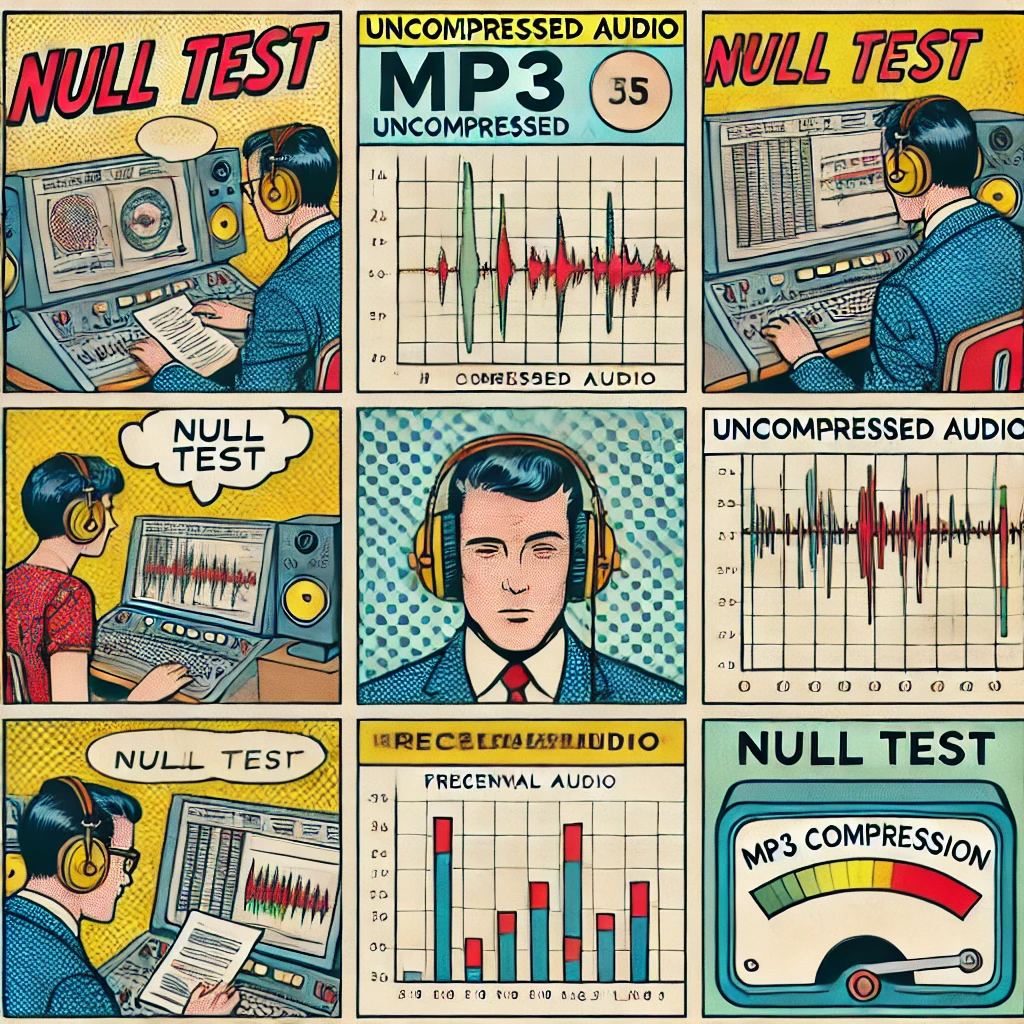MP3 vs Uncompressed audio null test
When you subtract a mp3 file from its comparatively uncompressed origin, the result is surprisingly musical. It is shocking how much information is lost between original and digitally-compressed mp3. When played, what has been removed is shockingly song-like…almost like a twin has been removed.
An MP3 vs. uncompressed audio null test is an interesting experiment to understand the differences in sound quality between compressed (MP3) and uncompressed (e.g., WAV, AIFF) audio formats. The test is designed to highlight what, if any, audible information is lost during the compression process that MP3 files undergo.
How a Null Test Works
A null test involves playing two audio tracks simultaneously, with one of the tracks phase-inverted (flipped 180 degrees). If the two tracks are identical, they will cancel each other out completely, resulting in silence. This is because the phase inversion causes identical sound waves to destructively interfere with each other. If there is any difference between the two tracks, however, the test will not result in complete silence; instead, the differences between the two tracks will be audible. This method is often used in audio engineering to detect subtle differences in processing or to compare the quality of different audio formats.
MP3 vs. Uncompressed Audio
MP3 is a lossy compression format designed to significantly reduce the file size of audio recordings by removing parts of the sound that are deemed to be beyond the auditory resolution of most people, based on psychoacoustic models. This makes MP3 files convenient for storage and streaming but can result in a loss of audio fidelity, especially at lower bitrates.
Uncompressed audio formats like WAV or AIFF, on the other hand, preserve all the audio information exactly as it was in the original source, leading to larger file sizes but no loss in sound quality.
Expected Outcomes of the Null Test
When conducting a null test between an MP3 file and its uncompressed original, the test will not result in silence, indicating that the MP3 compression has indeed altered the audio content. The audible difference, which is what remains after the null test, represents the information that was discarded during the MP3 compression process.
The extent and nature of the audible differences can vary based on several factors:
– Bitrate of the MP3: Higher bitrates result in less compression and thus, closer fidelity to the original. Lower bitrates increase compression at the expense of quality.
– Complexity of the Audio: Complex recordings with a wide dynamic range and rich harmonic content are more likely to suffer noticeable degradation in MP3 format, especially at lower bitrates.
– Listener’s Audio System: The quality of the speakers or headphones and the listening environment can affect one’s ability to perceive differences between the compressed and uncompressed files.
– Listener’s Hearing Acuity: Individual variations in hearing sensitivity, especially at high frequencies where MP3 compression often makes cuts, can influence the outcome of the test for different listeners.
Conclusion
A null test between MP3 and uncompressed audio files is a revealing way to understand the impact of MP3 compression on sound quality. While MP3 offers the advantage of reduced file size, it does so at the cost of discarding some audio information. The significance of this loss depends on various factors, including the bitrate of the MP3, the complexity of the audio content, and the listener’s equipment and hearing. For critical listening or professional audio work, uncompressed formats are generally preferred to preserve the full fidelity of the recordings.
